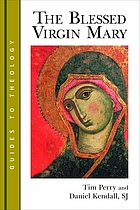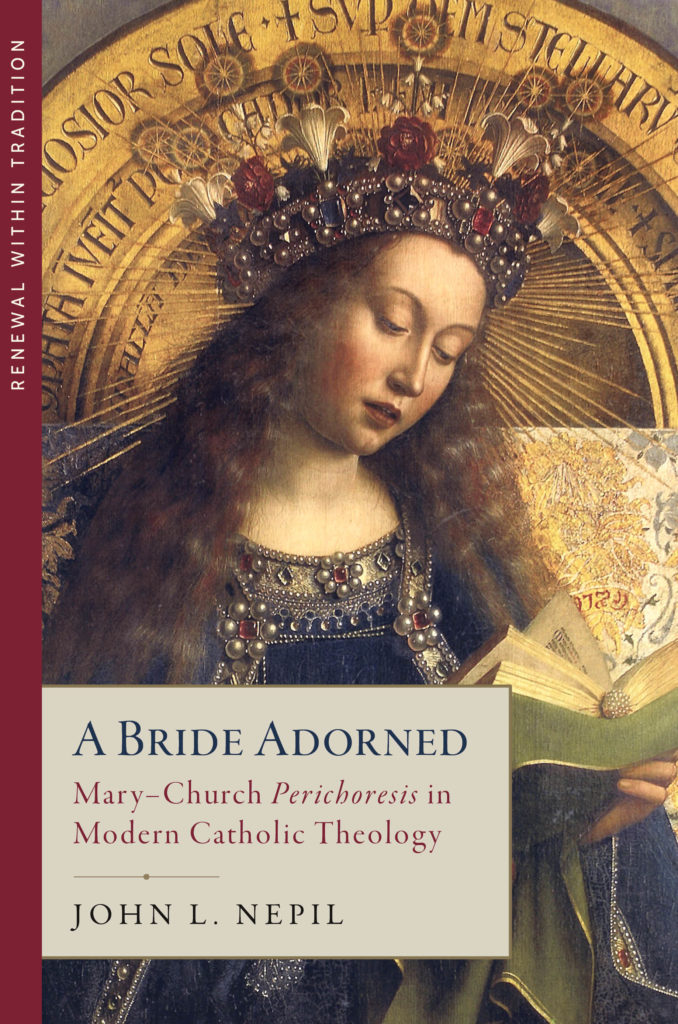To find resources on Mariology, select the Subject search on the Advanced Search of the catalogue. For this particular subject, some of the search terms that will get you the largest number of relevant results are:
For similar topics, check out these related LibGuides:
The following entries come from Oxford Bibliographies:
Gender and Art in the Middle Ages - Includes section on ‘The Virgin Mary and the Holy Family’
Icons - Includes section on "Virgin Mary"
Mary - From Oxford Bibliographies
Mary in Islam - From Oxford Bibliographies
Saints and Mystics: After Trent - Includes section on "The Virgin Mary"
From the Encyclopedia of Religion (2nd ed.):
Mary: An Overview - From the Encyclopedia of Religion (2nd ed.).
Mary: Feminist Perspectives - From the Encyclopedia of Religion (2nd ed.)

 The Blessed Virgin Mary
by
Tim S Perry 1969-Daniel Kendall
A collection of essays that bear witness to a common conviction on the part of a number of Anglicans, namely that the Blessed Mother of the Lord has been badly neglected in recent Anglican theology and that, for the sake of the Anglican Communion and of Christendom as a whole, it is desirable that this neglect should be corrected.
The Blessed Virgin Mary
by
Tim S Perry 1969-Daniel Kendall
A collection of essays that bear witness to a common conviction on the part of a number of Anglicans, namely that the Blessed Mother of the Lord has been badly neglected in recent Anglican theology and that, for the sake of the Anglican Communion and of Christendom as a whole, it is desirable that this neglect should be corrected.
 A bride adorned : Mary-Church perichoresis in modern Catholic theology
by
John L. Nepil
"Starting in the early to mid-nineteenth century, Catholic theology witnessed a profound retrieval of patristic reflection on the interrelationship of the Virgin Mary and the Church. This dynamic reached a doctrinal high point with the declarations of Vatican II and Pope Paul VI concerning Mary as "type of the Church" and "Mother of the Church," and it also provided the impetus for further theological exploration of the deeper unity of the Mother of Christ and his mystical body. In A Bride Adorned, John L. Nepil examines how this interrelationship has been formulated in modern theology in terms of perichoresis, a notion of unconfused reciprocity or interpenetration drawn from Christology and Trinitarian theology first applied to Mary and the Church by the nineteenth-century German theologian Matthias Scheeben. In the first part of the study, Nepil treats the foundations of this formulation, outlining its historical background and creative articulation by Scheeben. The second part tracks developments of Scheebens insight in the thought of twentieth- century theological luminaries Charles Journet, Hans Urs von Balthasar, Louis Bouyer, and Leo Scheffczyk, each of whom distinctively articulate the shared conviction that neither Mary nor the Church can be understood apart from each other. The third part draws out the far-reaching doctrinal and pastoral implications of this deepened account of the Mary-Church relation, establishing its vital importance for ongoing theological and ecclesial renewal. Through his careful engagement with these figures, Nepil shows how Mary and the Church are to be understood as two realizations of a single mystery. This vantage on Mary and the Church sheds new light on the vision of the Council Fathers at Vatican II, and it charts a course for the Churchs flourishing via a return to her Marian heart"--
A bride adorned : Mary-Church perichoresis in modern Catholic theology
by
John L. Nepil
"Starting in the early to mid-nineteenth century, Catholic theology witnessed a profound retrieval of patristic reflection on the interrelationship of the Virgin Mary and the Church. This dynamic reached a doctrinal high point with the declarations of Vatican II and Pope Paul VI concerning Mary as "type of the Church" and "Mother of the Church," and it also provided the impetus for further theological exploration of the deeper unity of the Mother of Christ and his mystical body. In A Bride Adorned, John L. Nepil examines how this interrelationship has been formulated in modern theology in terms of perichoresis, a notion of unconfused reciprocity or interpenetration drawn from Christology and Trinitarian theology first applied to Mary and the Church by the nineteenth-century German theologian Matthias Scheeben. In the first part of the study, Nepil treats the foundations of this formulation, outlining its historical background and creative articulation by Scheeben. The second part tracks developments of Scheebens insight in the thought of twentieth- century theological luminaries Charles Journet, Hans Urs von Balthasar, Louis Bouyer, and Leo Scheffczyk, each of whom distinctively articulate the shared conviction that neither Mary nor the Church can be understood apart from each other. The third part draws out the far-reaching doctrinal and pastoral implications of this deepened account of the Mary-Church relation, establishing its vital importance for ongoing theological and ecclesial renewal. Through his careful engagement with these figures, Nepil shows how Mary and the Church are to be understood as two realizations of a single mystery. This vantage on Mary and the Church sheds new light on the vision of the Council Fathers at Vatican II, and it charts a course for the Churchs flourishing via a return to her Marian heart"--
 Theotokos: a theological encyclopedia of the Blessed Virgin
by
Michael O'Carroll
Theotokos: a theological encyclopedia of the Blessed Virgin
by
Michael O'Carroll
From the Catechism of the Catholic Church
"He was conceived by the Holy Spirit, and born of the Virgin Mary," Paragraph 2
"I believe in the Holy Catholic Church," Paragraph 6. Mary - Mother of Christ, Mother of the Church
Apostolic Constitutions
Apostolic Letters
Encyclicals
Lumen Gentium
See Chapter 8 of Lumen Gentium, entitled "The Blessed Virgin Mary, the Mother of God, in the Mystery of Christ and of the Church"